Ube Sticky Rice with Mango
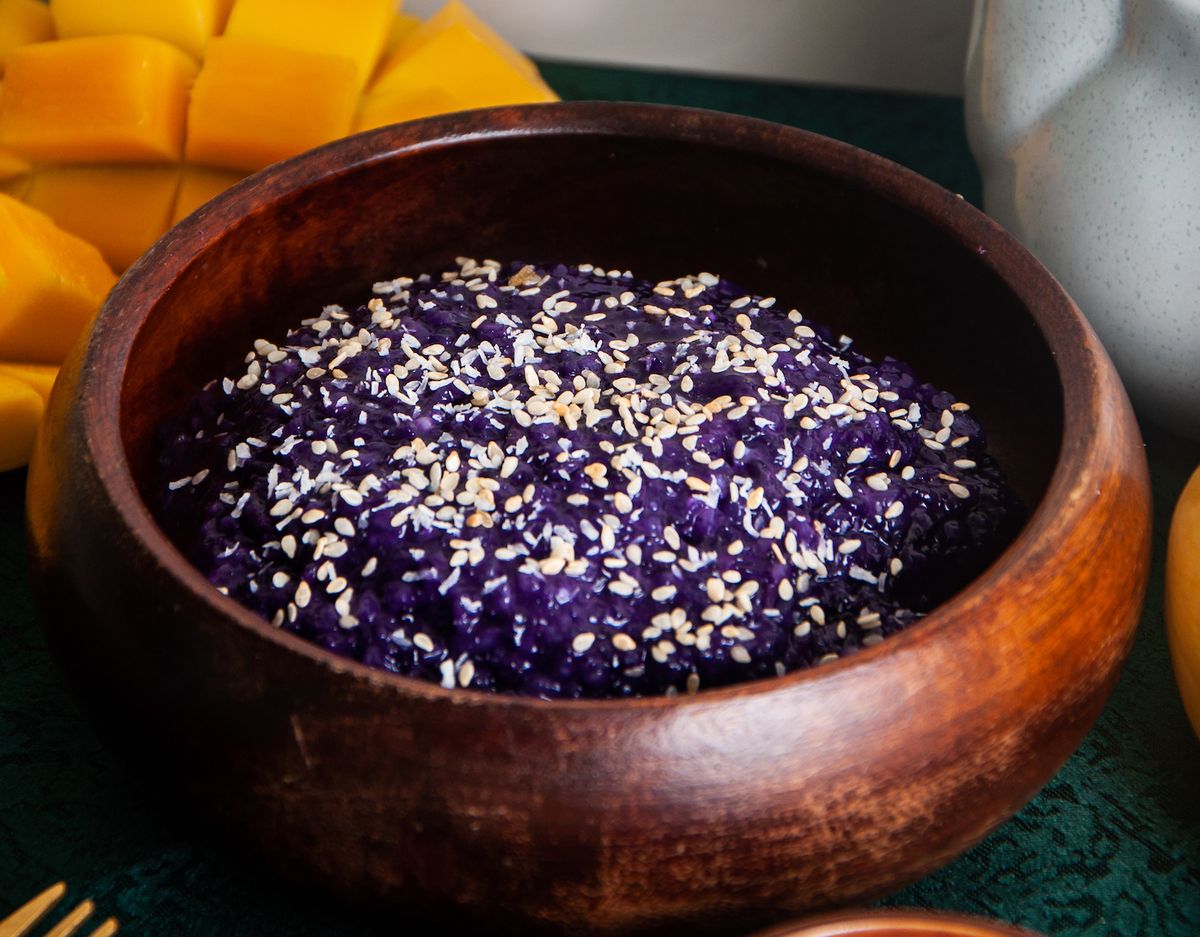
Street foods represent their people. They represent their cultures. When we go to a certain place, we often crave something local, something traditional. That is because we understand that with that, we were able to learn, if not all, at least part of their traditions.
If you've ever visited Thailand, you probably already know that mango sticky rice is one of their national desserts. It is frequently served during the summer months around April and May when mangoes are in season. Typically served on clear plastic plates with cling wrap, it can be bought in every corner stall all over Bangkok. If you were able to taste it locally, you would understand that most of what they usually eat, believe, and preserve can be somewhat similar to what others have. Through the familiarity of the food, we can understand more about their roots—something more than what meets the eye.
When I first began traveling, I became interested in Asian desserts. I discovered that most Asian neighboring countries’ local desserts resemble ours. We share the same admiration for coconuts, sticky rice, local fruits, and root crops. The process may be different, but the taste and the familiarity are what make it the same. But now, the younger generations are exploring traditional foods in their own way. This is how the cooking process evolves. They are more modern in terms of vibrant colors and varieties. This is influenced by other cuisines—just like what they did in Ube Sticky Rice with Mango.
What is Ube Sticky Rice with Mango
Ube Sticky Rice with Mango is the result of two cultures coming together. Mango sticky rice as Thailand’s traditional dessert and ube as one of the Filipinos' well-known root crops. Their common denominator is that they both share the same passion for coconut milk, mangoes, and glutinous rice.
This ube version’s taste is still sweet, like a tropical rice pudding, and nutty with a grainy feel because of the ube. It has this distinct dark purple color that matches perfectly with bright yellow mangoes. The authentic and traditional methods usually steam the glutinous rice until cooked and mix it into sweet coconut milk before serving it with coconut sauce and mangoes on the side. But for this recipe, we will make it a lot easier and closer to reality. The rice will be prepared in the same manner as it is typically prepared at home. We used ube extract, which can be purchased online or in Asian markets, instead of the traditional ones. This Ube Sticky Rice with Mango can be perfectly served as an afternoon snack or breakfast in most provinces.
So without further ado, let's get started with our recipe!
How to Make Ube Sticky Rice with Mango
1. Wash glutinous rice to get rid of extra starch before cooking. Rinse it until the water runs clear.
2. Transfer sticky rice to a pot with water, cover it, and allow it to cook like regular rice.
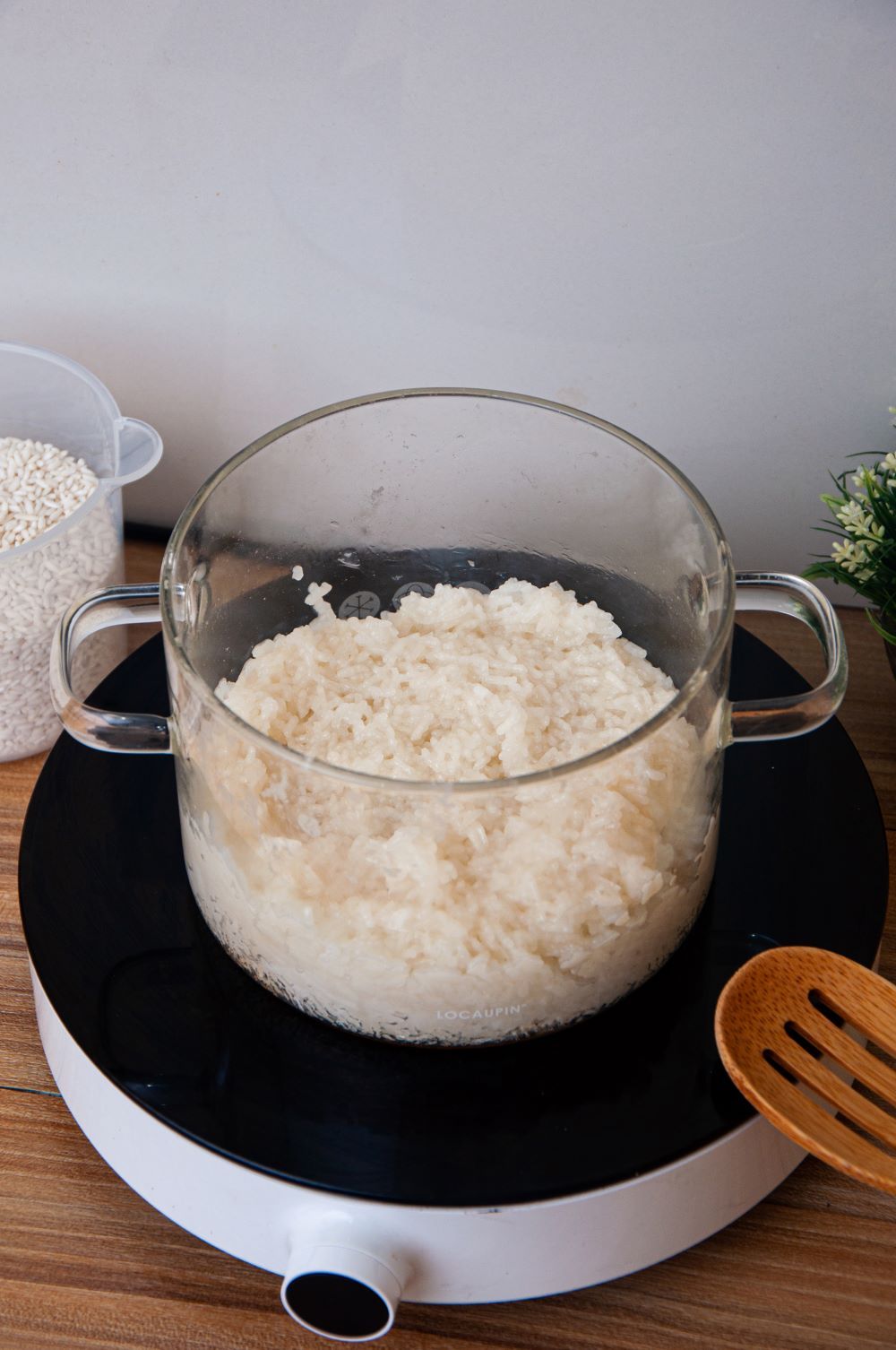
3. While the sticky rice is cooking, prepare to make the coconut sauce.
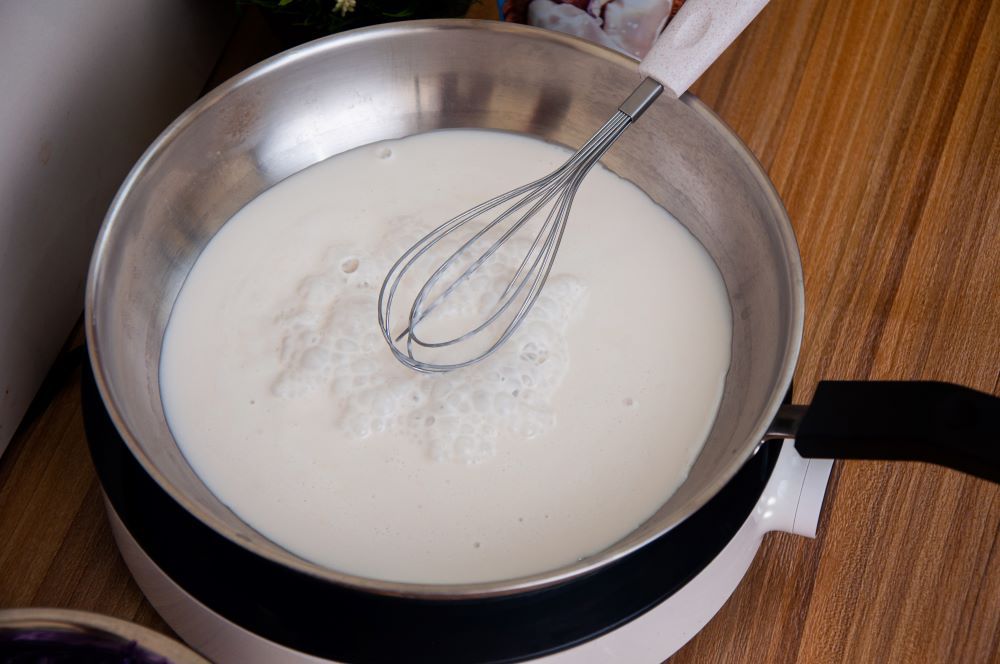
4. In a pan on low heat, add coconut milk and let it simmer until it becomes a sauce consistency. Once done, add the white sugar and mix until fully dissolved.
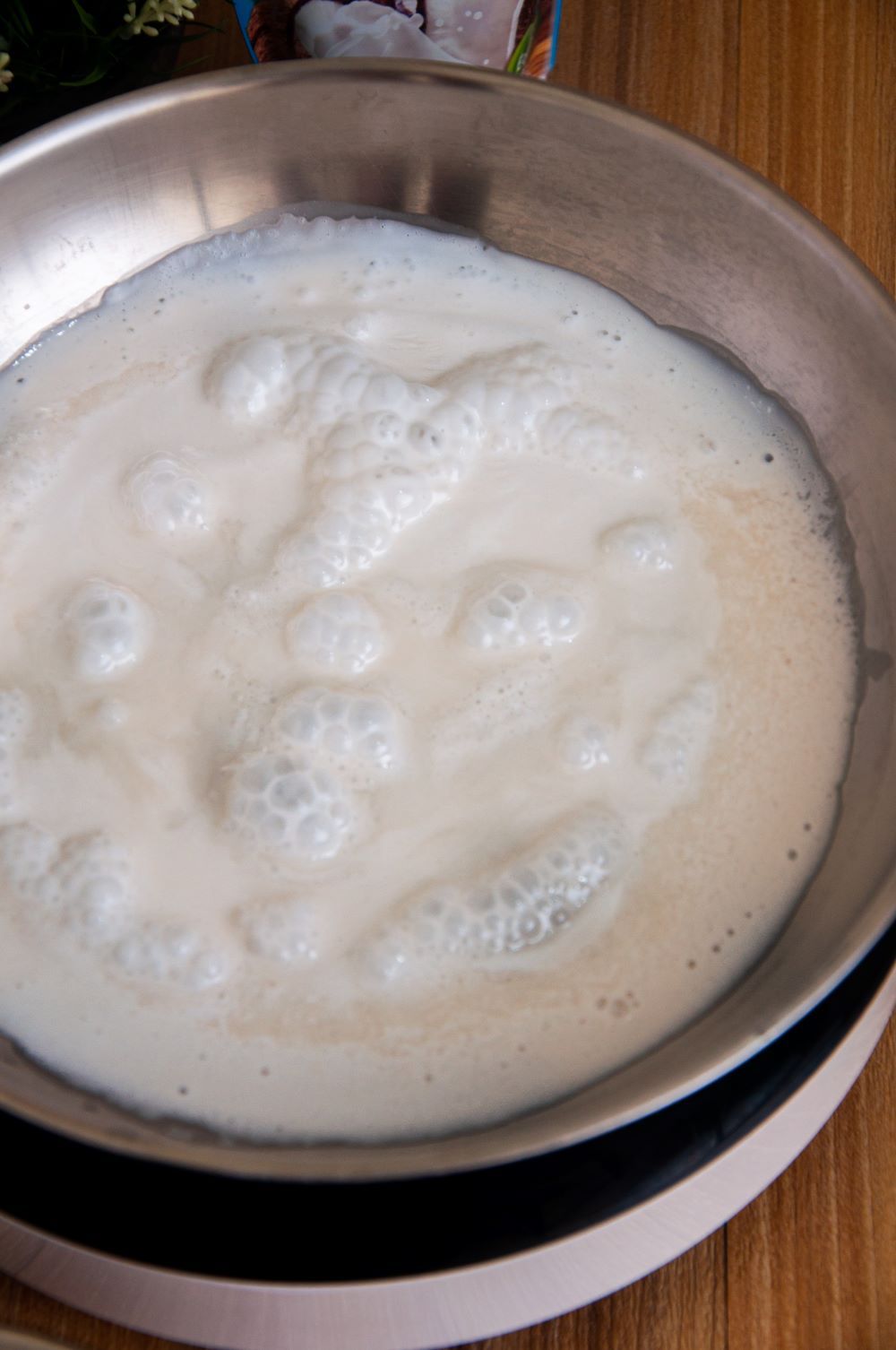
5. When the sticky rice is finished cooking, put it in a bowl and allow it to cool. Add your ube essence and combine after it has cooled. You should have a dark purple color.
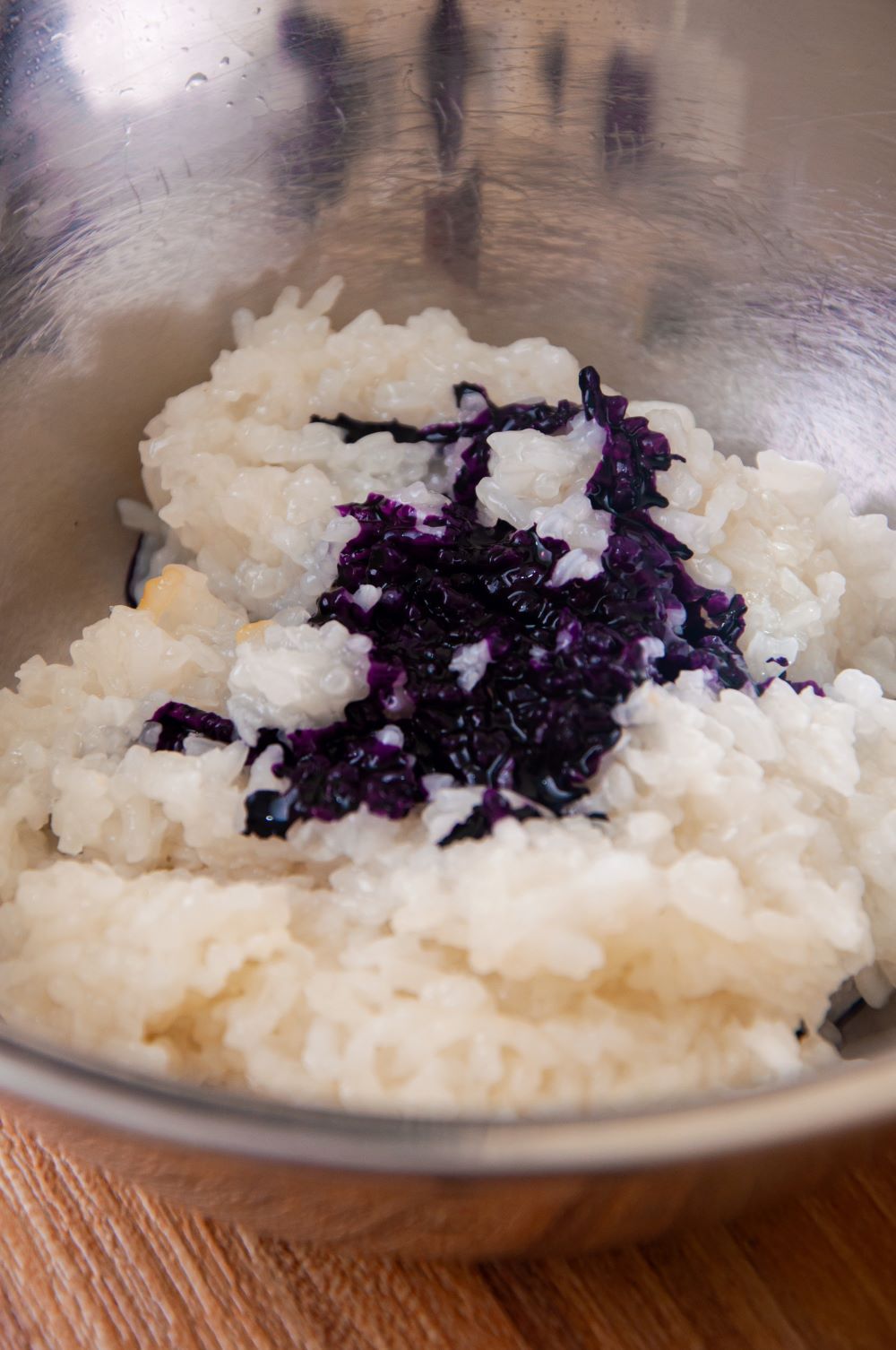
6. Create a medium-sized oblong shape with your ube sticky rice and serve it on a plate.
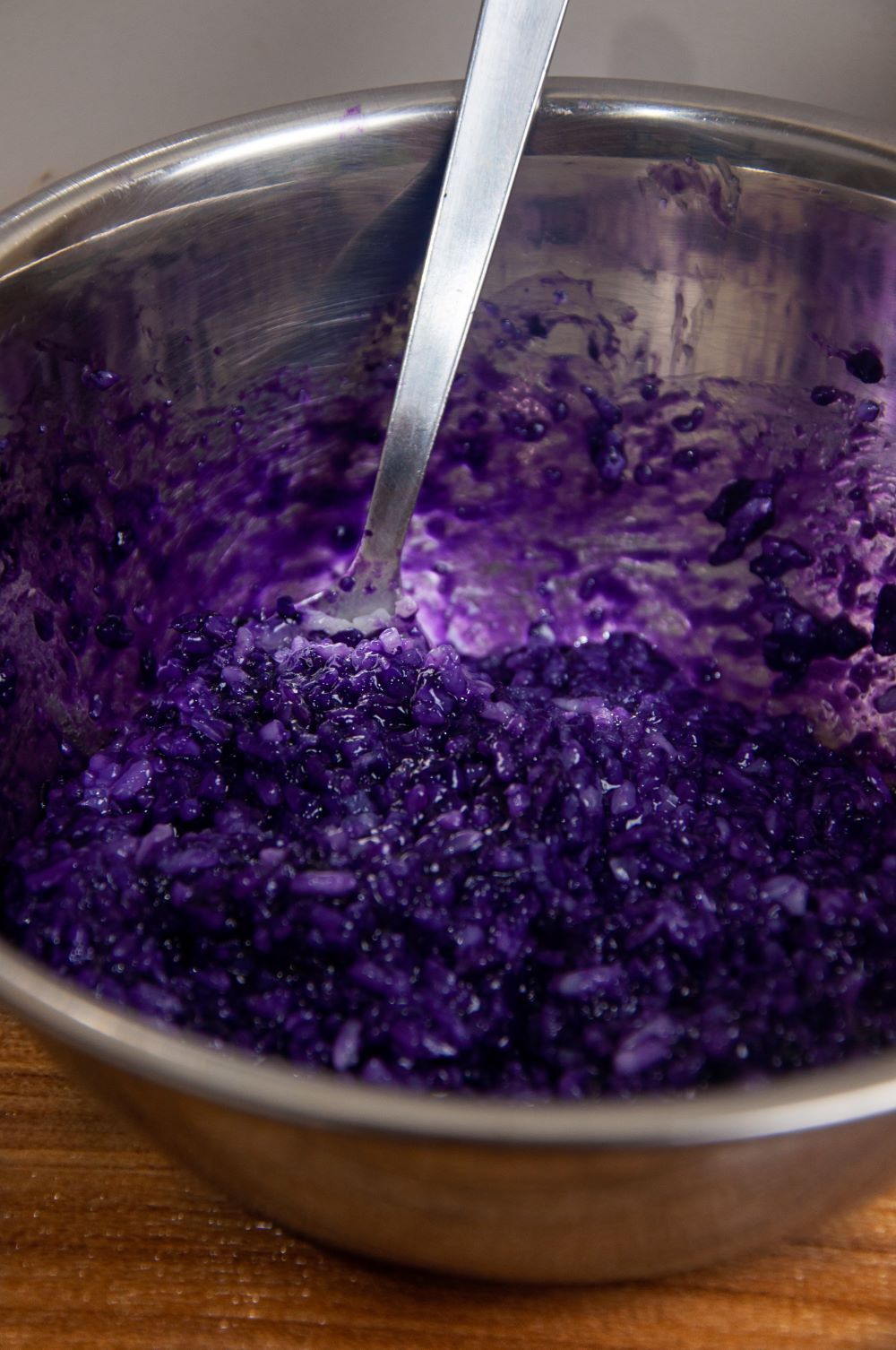
7. Drizzle some coconut sauce on top and add some coconut flakes and toasted sesame seeds.
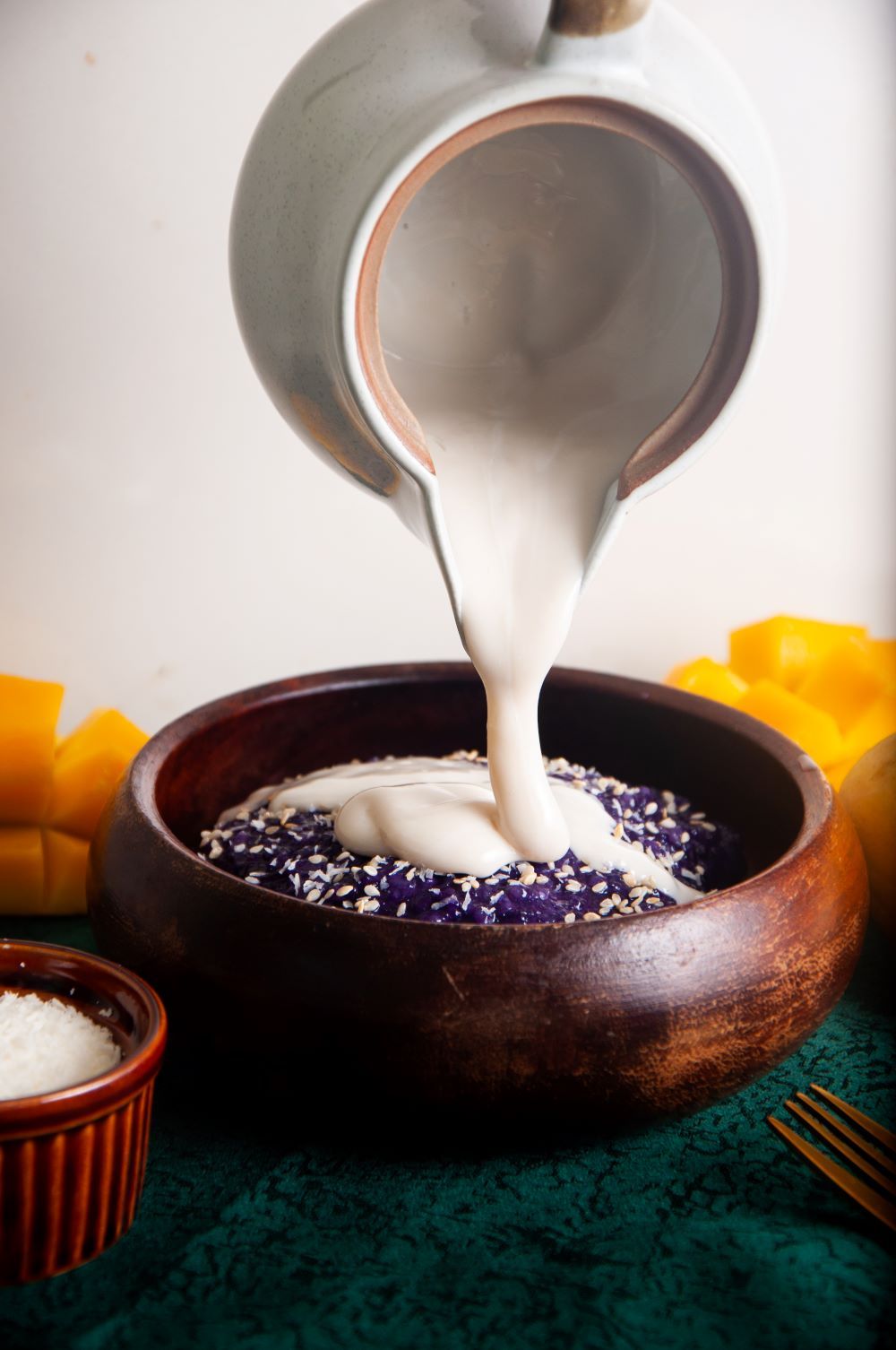
8. Serve your ube sticky rice with mango slices and enjoy!
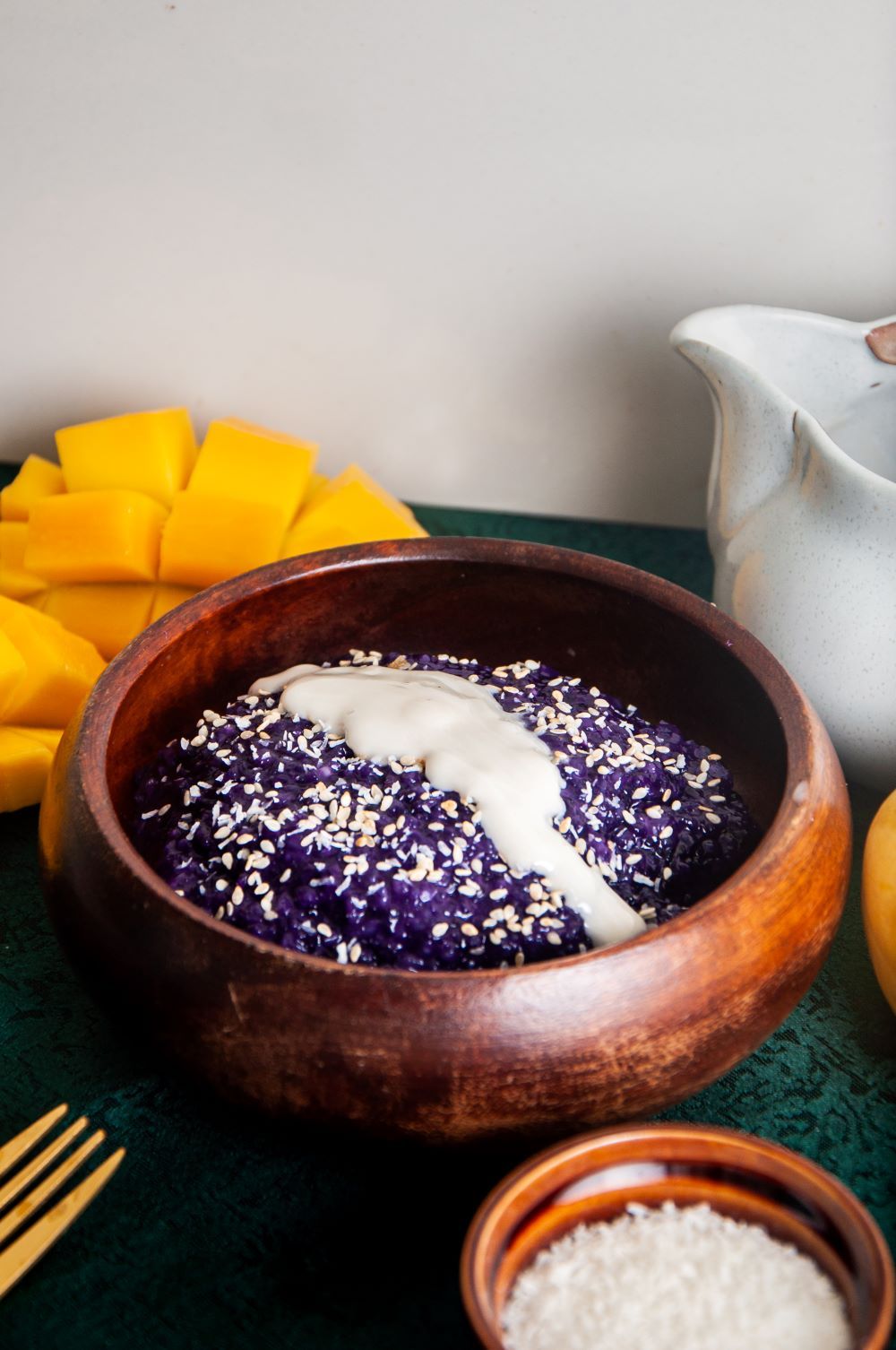
Tools
- You can use a standard pot to cook the rice. You can also use a rice cooker to make cooking easier.
- When mixing your rice, use stainless steel or glass bowls. Avoid using light-colored plastic because ube essence can leave purple stains in your bowls.
Notes
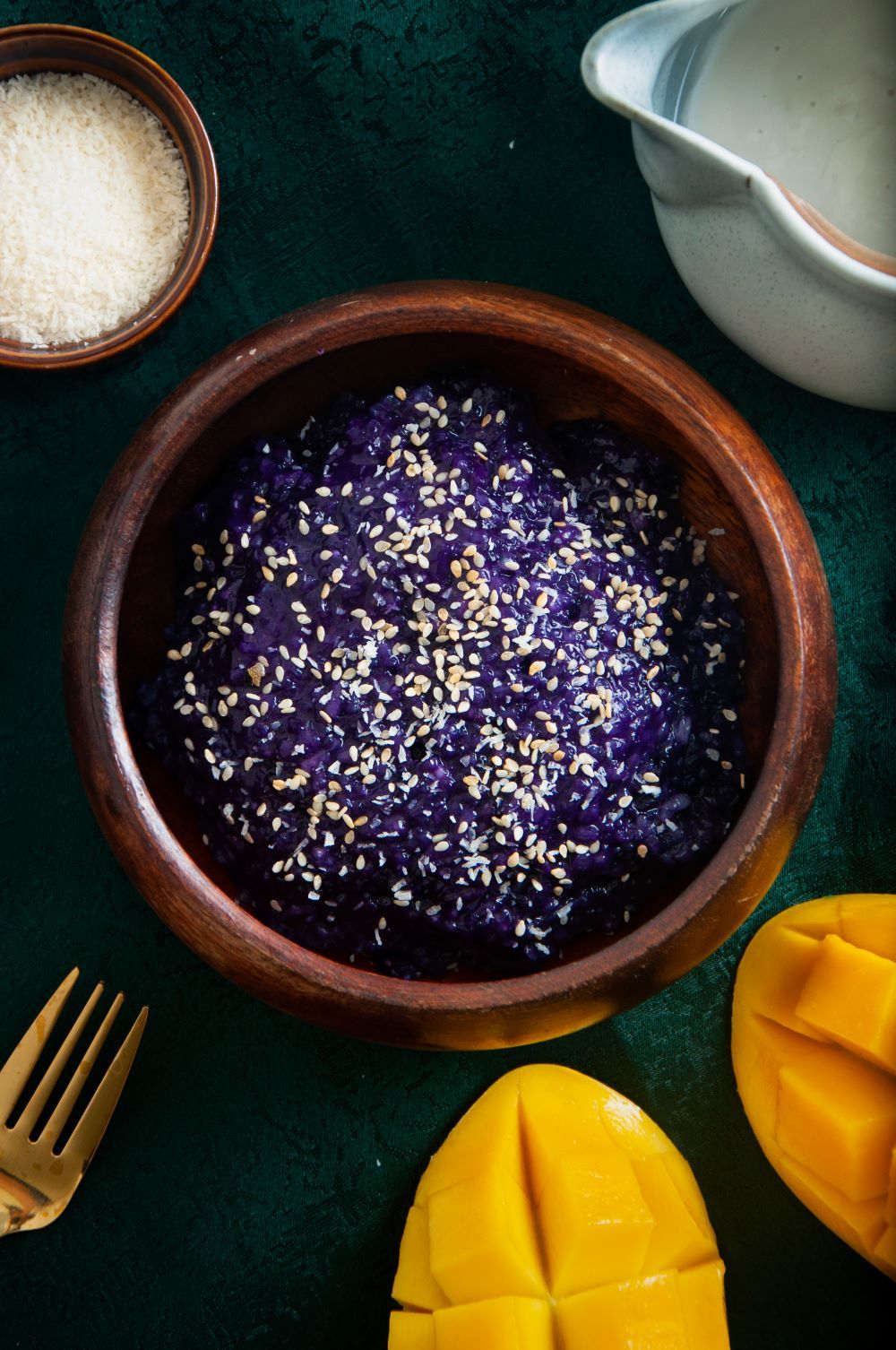
- Some places have a unique way of preparing sticky rice. They steam it without having it come into direct contact with water. After it has been cooked, they add flavors and mix in coconut milk. This method is also an option, but it will take more time to prepare and cook.
- If you have ube jam or ube paste available, you can mix that into your sticky rice instead of using the extract. This will give it a more authentic taste, although it will be lighter in color.
- You need to wash your sticky rice before cooking to remove excess starch. Do it 2-3 times or until the water runs clear.
- Some prefer soaking their rice overnight or longer before steaming it. Doing so will help reduce the cooking time of the sticky rice.
